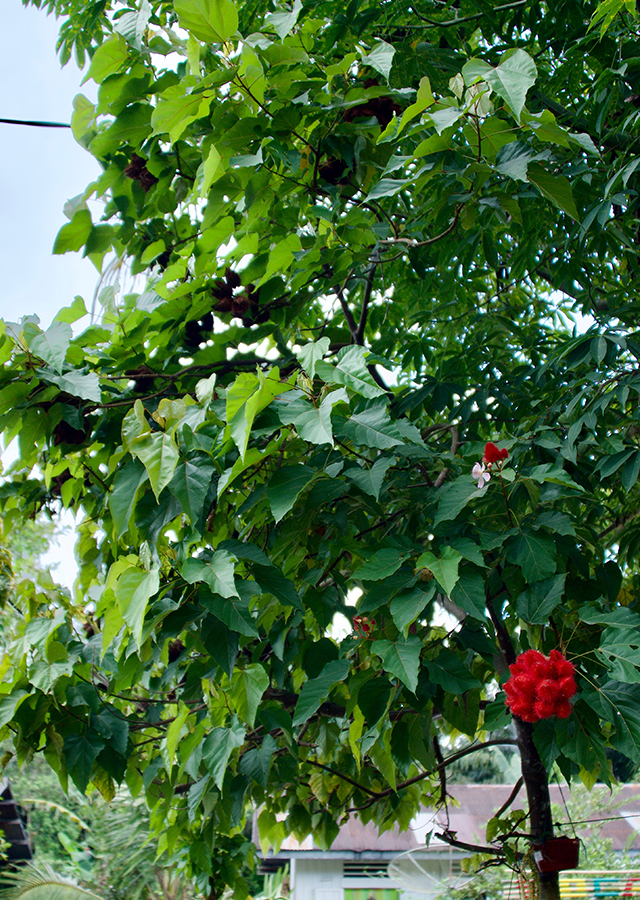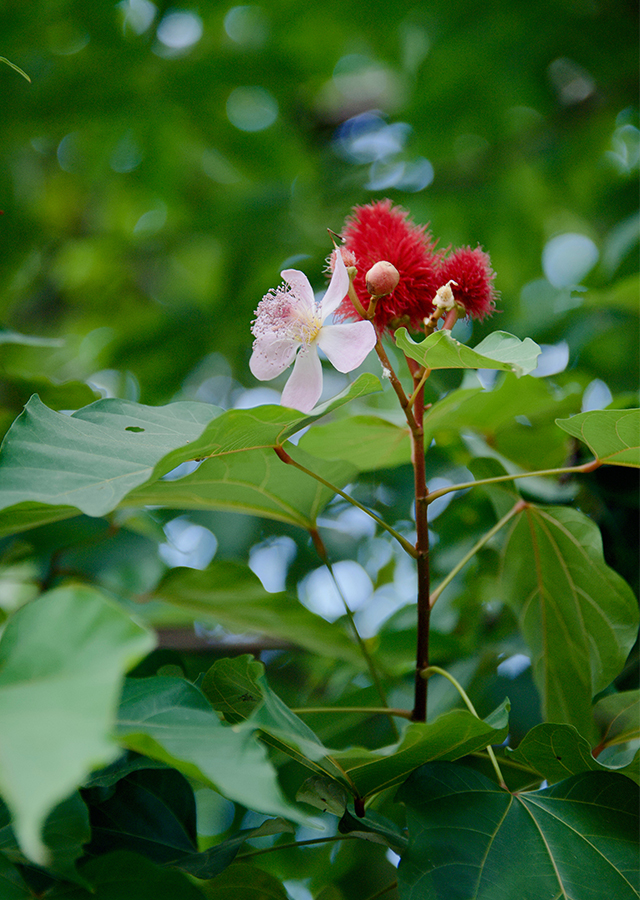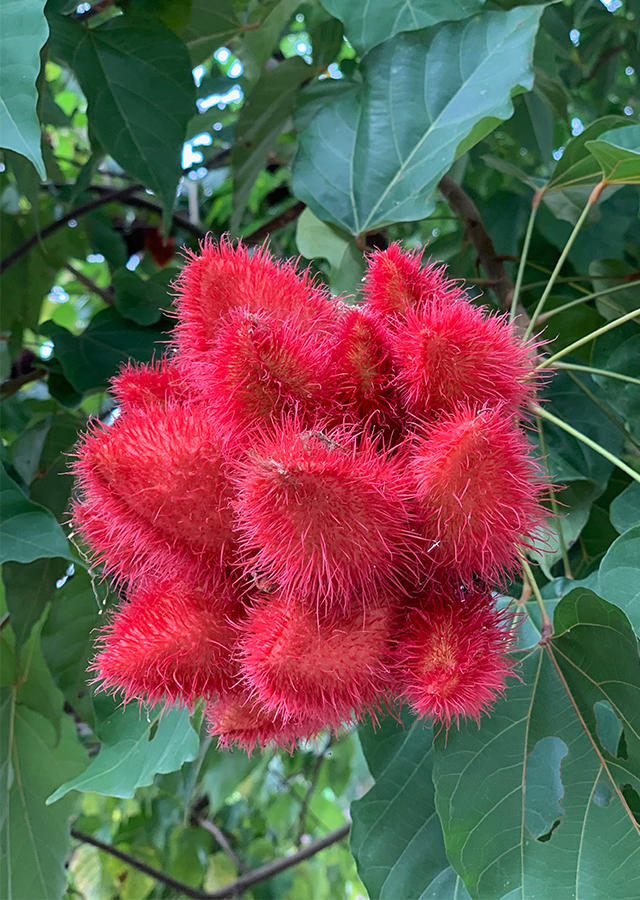Annatto Tree
Bixa orellana L.
Bixaceae
Location in our garden
Principal



Synonym
Bixa acuminata Bojer
Bixa americana Poir.
Orellana americana (Poir.) Kuntze
Habitus
Shrubs. A fast-growing evergreen shrub or small tree, perennial, growing from 2-8 m tall
Part Used
Leaves
Seeds
Bark
Flowers
Roots
Growing Requirements
Full Sunshine
Drought Resistant
Habitat
Forest
Coastal
Overview
Annatto tree is originally from tropical America. In tropical and subtropical regions around the world, it is cultivated and naturalized for the red substance that surrounds the seeds and which is commonly used as a dye, food coloring, flavoring, and insect repellent.
Vernacular Names
Urucum (Brazilian), Yan zhi mu (Chinese), Achuete (Phillipines), Achiote (Japanese), Galuga (Arabica), Diêù nhuôm (Vietnamese), Axiote (Mexican), Kam set (Thailand), Annato (French), and Kesumba (Indonesia).
Agroecology
A frost-free, wet, humid climate is needed by B. orellana. It can develop in tropical to subtropical climates at altitudes from sea level up to 2,200 m, where the average annual rainfall is 2,500-5,000 mm. It is spread throughout the whole year. A mean annual temperature in the range of 28-32 °C is preferred. It succeeds in choosing moist, but well-drained, neutral, or slightly alkaline soil in a sunny location on almost all soil types.
Morphology
- Stems - can be 10-30 cm in diameter, light to dark brown, tough and smooth, sometimes fissured.
- Leaves - entire, alternate with long petioles, ovate, 8-20 cm long, 5-12 cm wide, with a broad and heart-shaped base, and a pointed tip.
- Flowers - white or pinkish, 4 to 6 cm in diameter on terminal panicles.
- Fruits - ovoid or rounded, spiny capsules, reddish-brown, about 4 cm long, covered with long, slender, and soft spines. The fruit is dried and split open into two sections, revealing several small red seeds covered with a red pulp that produces dye.
- Seeds - ovoid, 4-5 mm long, seed coat with bright orange-red flesh.
Cultivation
- Generative transmission occurs by seeds. Germinate easily under moist conditions within 7-10 days. Seeds are sown directly in the ground, 2-5 seeds per hole, usually at the beginning of the rainy season, in well-prepared soil. In planting trays, seedlings can also be grown and kept in the nursery for 3-4 months before being transplanted into the field.
- Vegetative proliferation occurs by stem cutting, air layering, and budding. The selection of high-yielding, rapidly growing cultivars that flower early and profusely and bear fruit within 2 years is possible through the propagation of cuttings.
Chemical Constituents
Tannins, saponins, bixine, alkaloids, terpenoids, steroids, phenolic, glycosides, flavonoids, norbixin, beta karoten, cryptoxanthin, lutein, benzoic acid, acetic acid, ellagic acid, pantolacton, and cyanidin.
Traditional Medicinal Uses
- This plant is a bitter, astringent, purgative herb that is said to kill intestinal worms, minimize fever, promote digestion, and have expectorant effects.
- The roots have digestive and diuretic properties.
- The seeds are used as an aphrodisiac, emmenagogue, expectorant, and vermifuge.
- Root decoction is administered orally for asthma. For the prevention of venereal diseases, a root infusion is used in water and rum. Oliguria and jaundice are handled with a tea made from a root.
- To cure aches, the leaves are applied to the head and to sprains. As a treatment for dysentery and to prevent vomiting during pregnancy, a decoction of the leaves is used.
- For the alleviation of fevers, a macerated seed decoction is taken orally. They are used as syrup to treat pharyngitis and bronchitis. To stop blistering and scarring, the ground seeds are used for burns.
- As a remedy for skin rashes, sap from the bark and crushed leaves is used. As a treatment for malaria, angina, and asthma, a decoction of the bark is used.
Part Used
Reference Sources
- CABI. (No date). Invasive Species Compendium. Bixa orellana (annatto). https://www.cabi.org/isc/datasheet/9242. 21-10-2020.
- Fern, K. (2014). Useful Tropical Plants. Bixa orellana. http://tropical.theferns.info/viewtropical.php?id=Bixa+orellana. 21-10-2020.
- StuartXchange. (2017). Phillipines Medicinal Plants. Achuete. http://stuartxchange.com/Asuete. 21-10-2020.


